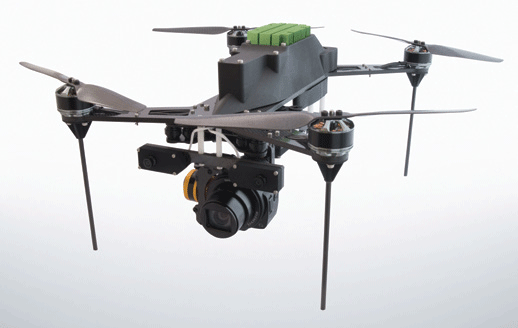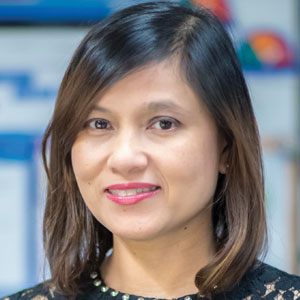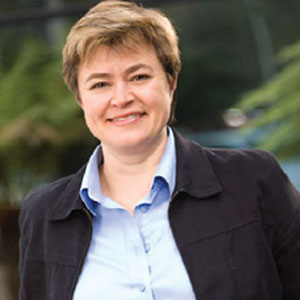THANK YOU FOR SUBSCRIBING

Autonomous Control Systems Laboratory [TYO: 6232]: Autonomous Drone Solution for Industrial Environments

Modern organizations from different sectors, such as agriculture, construction, and mining, employ drones to boost work efficiency. However, these organizations face challenges with minimal payload capacity, which leads to reduced flight time. They need additional power sources and mechanisms to improve the drones’ payload capacity, which, in turn, adds to the business cost. Besides, most traditional drones are GPS-driven with built-in magnetic compass and sensors for air-pressure that restrict their flight to only those areas where these sensors work. Organizations are compelled to hire an expert drone pilot to operate in areas like tunnels, chemical plants, or under-constructed buildings where the sensors become unserviceable. For fruitful business outcomes, contemporary firms require a drone that flies autonomously without depending on any sensor.
Having started straight out of a university lab in 2013 as a standalone drone technology provider, Autonomous Control Systems Laboratory (ACSL) [TYO: 6232] offers an autonomous unmanned aerial vehicle solution with innovative drones at its core. ACSL’s founder, an ex-university professor with more than two decades of experience in drone technology, created an innovative solution that is integrated with artificial intelligence (AI), user interface (UI), and cloud. This drone solution has stereo cameras with video GPU on-board for real-time computing and image processing (to extract unique pixels). “Enabled with unique self-localization and image processing technology, our drones can autonomously fly in environments where GPS data cannot be acquired,” mentions Satoshi Washiya, COO of ACSL.
These innovative drones perform self-localization using Visual SLAM (Simultaneous Localization and Mapping)—a technology that processes colour and light/ dark information of each pixel and extracts feature points (green points) of the image in real time to recognize the drone’s position.
With the image processing, the drones build 3D models of the working environment and help to measure the distance between the drone and the inspection target. This measurement eliminates any chance of a collision. These smart drones are highly beneficial in warehouse environments because of their ability to reverse and reroute autonomously for objective targeting. For instance, ACSL helped a large chemical company in Japan to develop an unmanned corrosion inspection system.
Having started straight out of a university lab in 2013 as a standalone drone technology provider, Autonomous Control Systems Laboratory (ACSL) [TYO: 6232] offers an autonomous unmanned aerial vehicle solution with innovative drones at its core. ACSL’s founder, an ex-university professor with more than two decades of experience in drone technology, created an innovative solution that is integrated with artificial intelligence (AI), user interface (UI), and cloud. This drone solution has stereo cameras with video GPU on-board for real-time computing and image processing (to extract unique pixels). “Enabled with unique self-localization and image processing technology, our drones can autonomously fly in environments where GPS data cannot be acquired,” mentions Satoshi Washiya, COO of ACSL.
These innovative drones perform self-localization using Visual SLAM (Simultaneous Localization and Mapping)—a technology that processes colour and light/ dark information of each pixel and extracts feature points (green points) of the image in real time to recognize the drone’s position.
With the image processing, the drones build 3D models of the working environment and help to measure the distance between the drone and the inspection target. This measurement eliminates any chance of a collision. These smart drones are highly beneficial in warehouse environments because of their ability to reverse and reroute autonomously for objective targeting. For instance, ACSL helped a large chemical company in Japan to develop an unmanned corrosion inspection system.
Enabled with unique selflocalisation and image processing technology, our drones can autonomously fly in environments where GPS data cannot be acquired
ACSL drones autonomously captured and uploaded the images to the cloud. Thereafter, the AI analytics running on the cloud analyzed the images and leveraged the location information to gather accurate details of corroded parts.
At present, ACSL caters to more than 60 leading companies in Japan and based on their unique challenges, “We start the implementation of our comprehensive drone solution with a proof of concept,” says Washiya. The next segment in the client engagement process is the custom development stage, where it adds the user interface and the drones that match the clients’ requirements.
ACSL primarily focuses on industrial inspections of assets like bridges, chemical plants, and flooded tunnels. A case in point, ACSL aided multidisciplinary engineering consulting firm, NJS Consultants, with drones that fly in small diameter sewage pipes and acquire high-resolution video to conduct inspection smartly. These inspections accelerate the screening process and eliminate the need for human involvement. ACSL also caters to the nation’s self-defense force and the fire department during disaster surveillance and surveys.

As the only drone manufacturer to be listed in the Tokyo Stock Exchange, ACSL focuses on R&D and hires the top worldwide talents in drone technology to enhance its drone capacities beyond the autonomous control capability. ACSL is adding new features in its drones to autonomously detect and follow any object to facilitate delivery services. “In 2019, we aim to expand across the Southeast Asia region,” concludes Washiya.

I agree We use cookies on this website to enhance your user experience. By clicking any link on this page you are giving your consent for us to set cookies. More info













